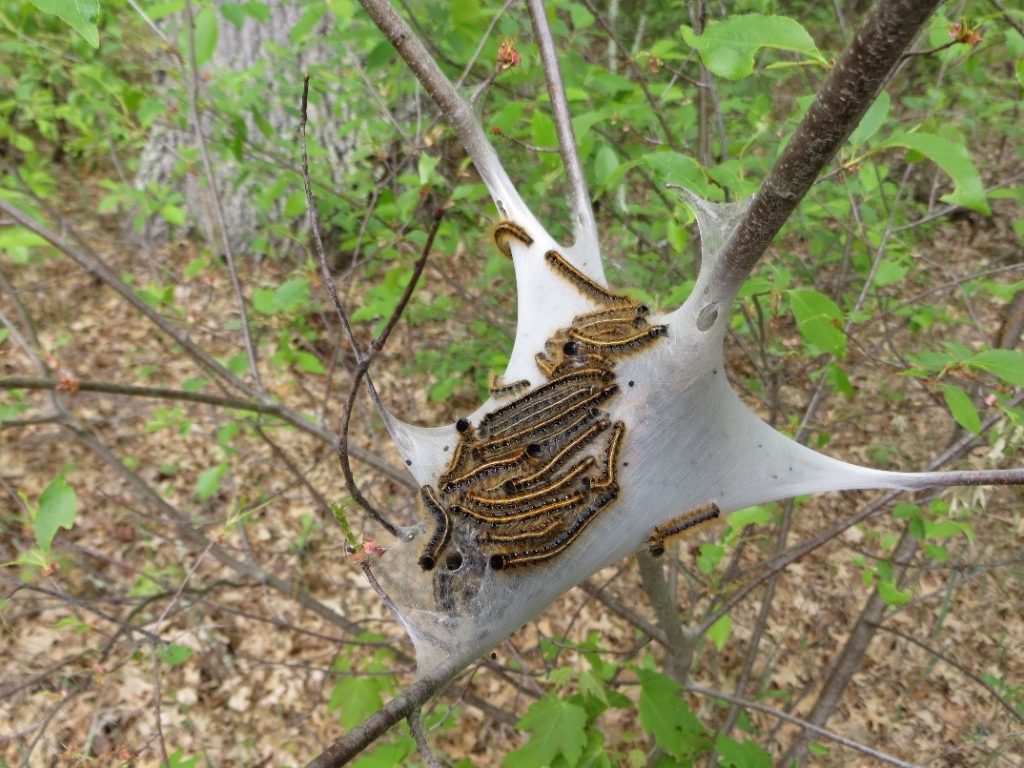By Todd Lanigan, DNR Forest Health Specialist, Eau Claire. todd.lanigan@wisconsin.gov or 715-210-0150
Eastern tent caterpillars (ETC) are hatching and beginning to feed on host trees, including cherry, apple and crabapple. Landowners and homeowners may notice the white silken tents forming in branch forks which are spun by ETC.

Eastern tent caterpillars on a black cherry tree. Photo credit: Wisconsin DNR
People often confuse these silken tents for the exotic gypsy moth caterpillars, but gypsy moths do not make tents. Although ETC forms unsightly tents, it is a native insect, so management is not typically necessary. Even completely defoliated trees will put out new leaves within a few weeks.
If landowners want to remove the tents and caterpillars, the best time is early morning or evening when the caterpillars are inside the tent. Unless it is raining, ETC leave their tents each morning to feed throughout the day before returning at night.
Tents can be removed either by hand or with a rake if they are high in the tree. To kill the caterpillars, soak the caterpillar-filled tents in soapy water or seal them in a trash bag. If you decide to use insecticides to control ETC, the insecticide needs to penetrate inside the tent. Do not prune branches, burn the tents or soak them with WD-40.
These methods are more harmful to the tree than ETC defoliation and are not recommended.
For more information on eastern tent caterpillar, read this factsheet from UW-Extension.
